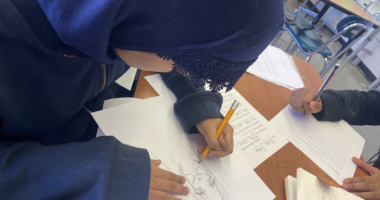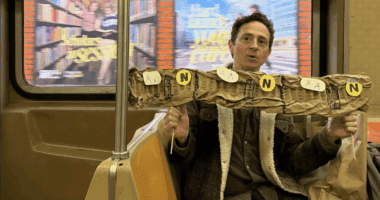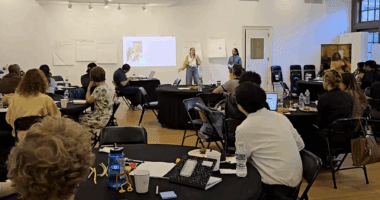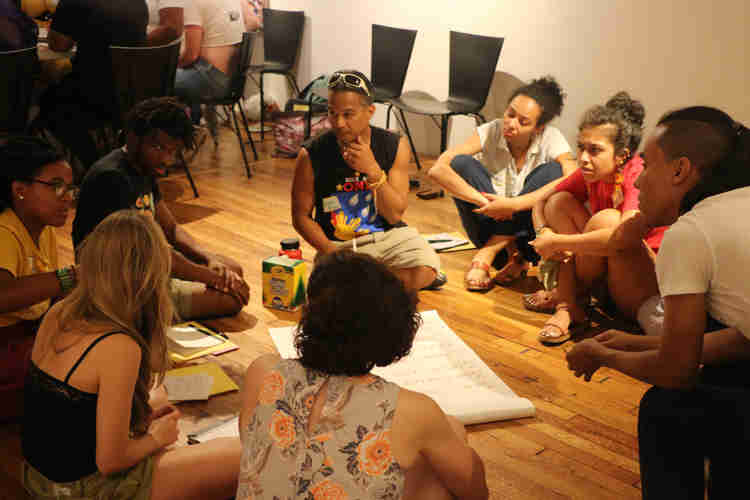
What is needed for the profession of teaching artistry to be ethically grounded in social justice? What does it look like? Who is involved? What values and goals are needed? How do we transform rich, meaningful discussions into practical applications in the classroom? These are just a few questions the Summer Institute collective sought to tackle in this year’s three-day training for advanced teaching artists.
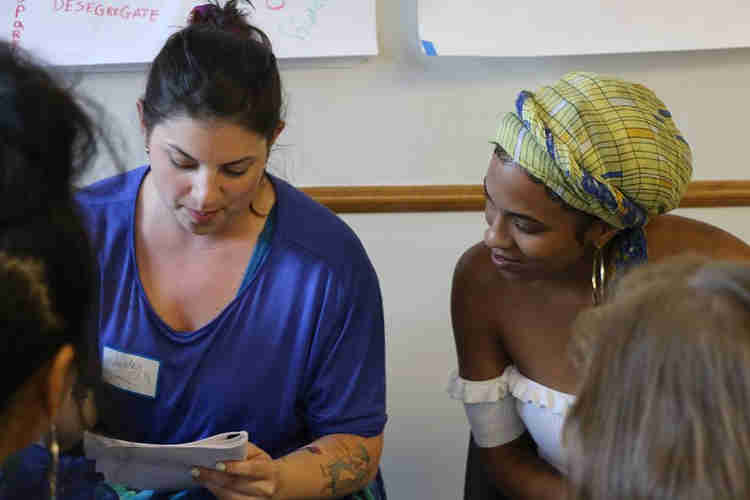
On July 16th, 2018, twenty-five teaching artists from across the country traveled to the South Bronx in order to participate in this year’s training. We were fortunate to collaborate with BronxArtSpace, a non-profit gallery that promotes the innovative ideas of underrepresented and emerging artists and curators in the South Bronx.
On exhibit was a project called Model Redux, in which five artists showcased work that expressed how to create a cultural model in the midst of the current social changes. A perfect setting for this training.

At the helm of this year’s training were TAP Facilitators Karla Robinson, Amanda Torres, and Andre Ignacio Dimapilis, together a QPOC collective committed to creating inspiring spaces for artist educators to develop critical consciousness and deepen their liberatory teaching practices. This is the first time this collective has facilitated together and they jumped head first into the process, furiously collaborating and building one another up to create a strong training for the participating Teaching Artists.
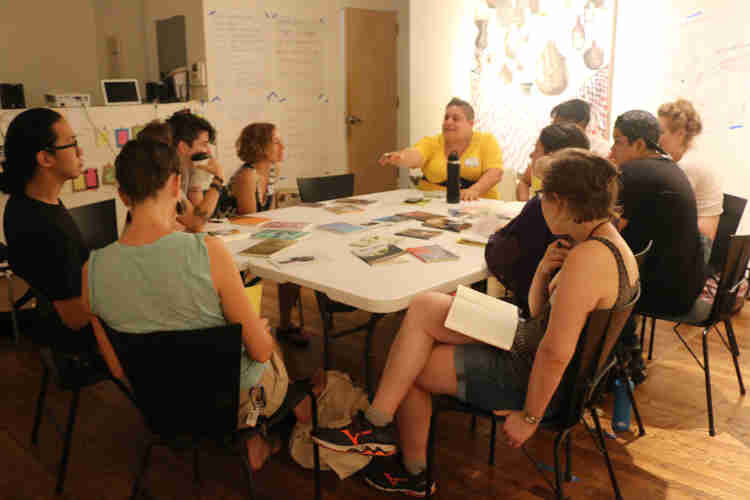
The training started with introductions, guiding questions, and exploring the definitions of different terms: Decolonization, Safety, Trust, Affirmation, Accountability, and Accessibility. The group worked together to research and analyze different definitions, intersections, and ways in which these words infiltrate our classrooms. While the “what” was exploring social justice, the “how” was doing it collaboratively, creating a strong, trusting team.
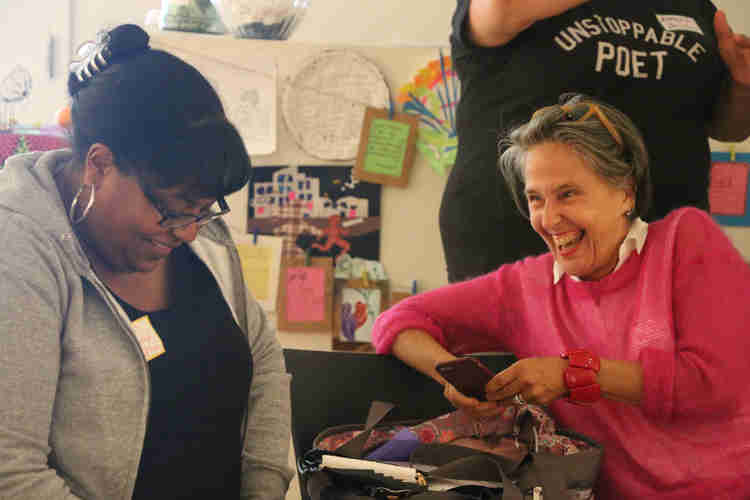

The participants were placed in Care Teams, in order to more closely connect with one another. Care Teams explored the neighborhood, researching and interviewing a variety of residents of the South Bronx. The teams conducted collaborative, community-based research designed, “to interrogate the gap between dominant ideologies and human lives, using deeply participatory methodologies accountable to the goals of social justice” (Torre, Fine, Stoudt & Fox, 2012, p. 171). This prevents research on a community without centering the community’s voice: What do they think of their neighborhood? How do they feel about outsiders’ views? What do they think are the highlights and challenges of their community?
By centering community in our activities, and by centering our students in our teaching, we begin to create meaningful, social justice-based pedagogy.

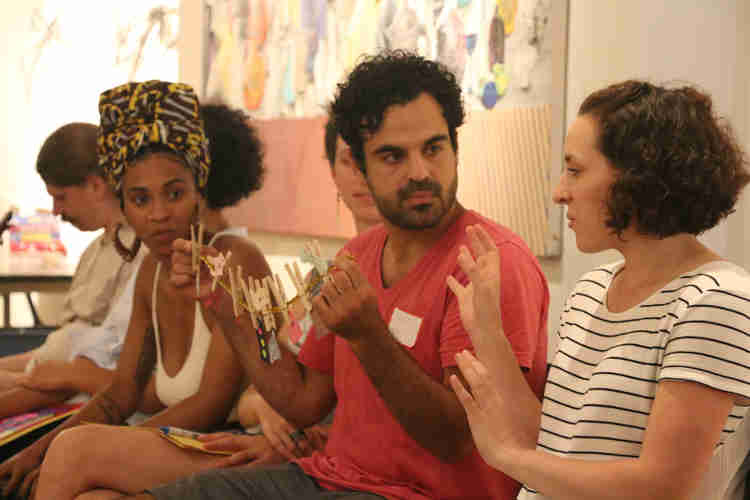
After bringing in both the participants’ voices and the voices of the Bronx community, the facilitators ask the group to look at art as political and resistant. The goal was to root the group in spiritual work, deepen trust, and to make protest art.
To deepen trust, we must have agreements about what kind of space we are in and want to create. The collective discussed Community Agreements for the training, building on each others suggestions, and compiled a complete list they could respect throughout the training.

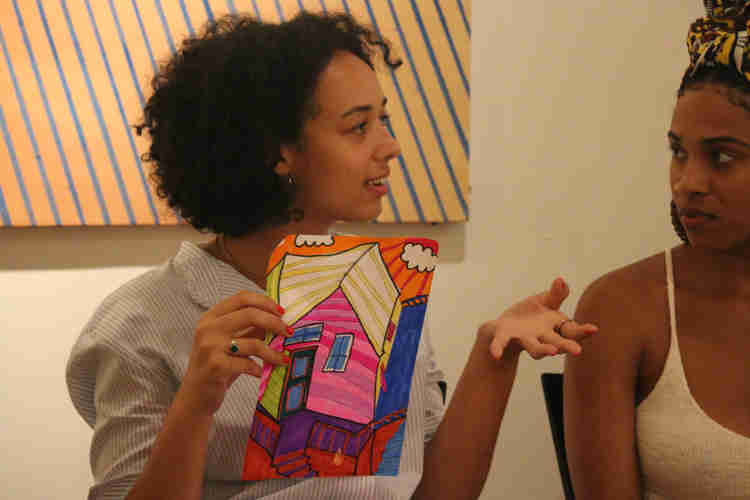
A shared understanding of our work, terminology, and the way we want the space to be, allows us to create meaningful work on common grounds and begin to build one another up.
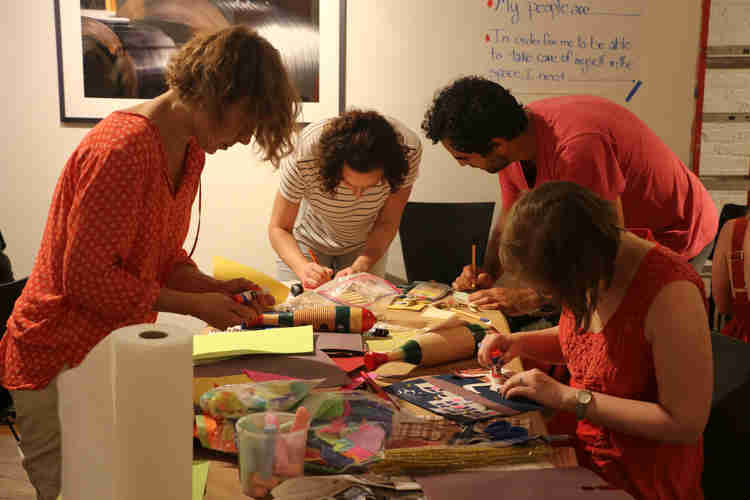
After setting the foundation for social justice theory to become practice, the participants used art to define themselves and their communities. They worked with one another to create projects that spoke to the work they’d been making and shared that work at an afternoon open mic.
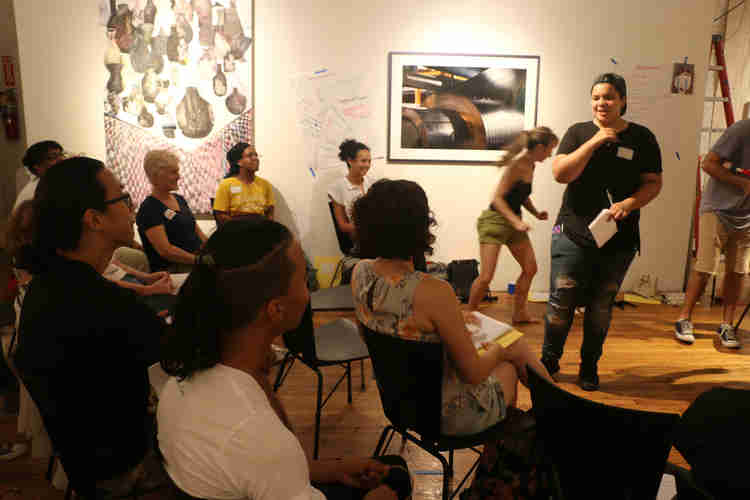
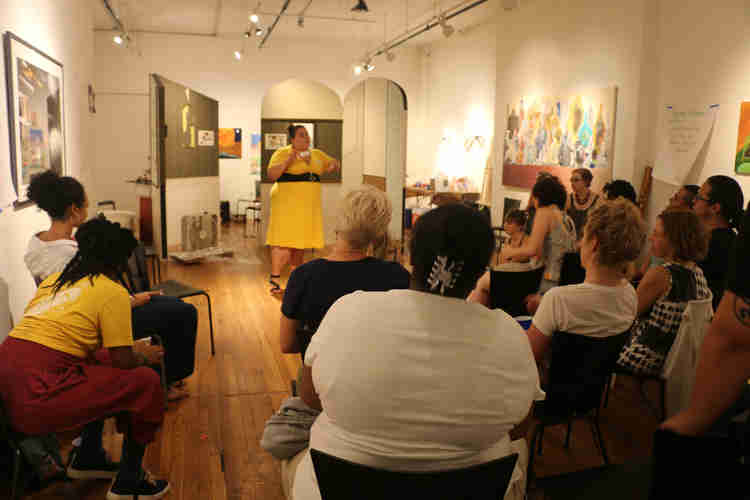
Finally, after several full days of hard work, the participants crafted collaborative lessons based on their experiences that they could use in their classrooms. Each participant had the opportunity to create, implement, and revise their workshops, which were then shared with the entire group, giving every participant 15 strong, collaborative lessons to take with them from Summer Institute.
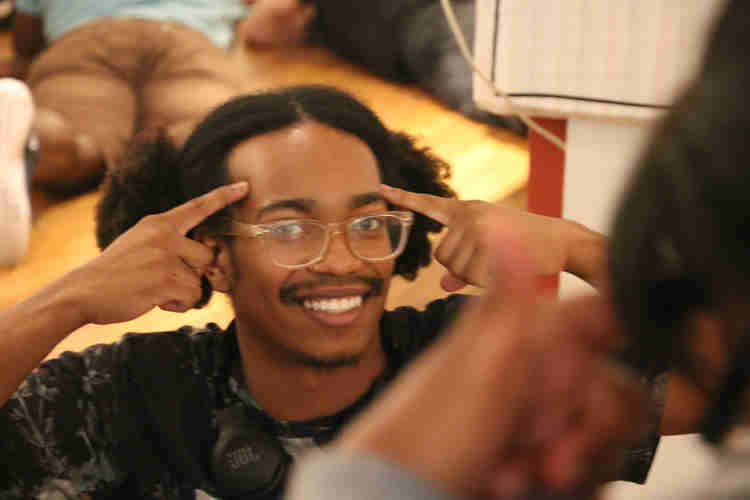
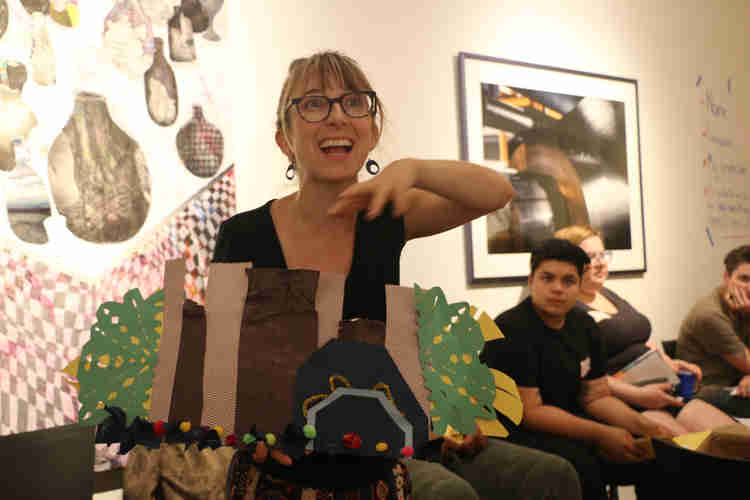
“The most important takeaway for me was feeling so supported and having a space where I can contribute my voice and learn from others. The feelings I had throughout gave me the boost I needed to continue striving and advocating for similar spaces for the youth I work with.” – Sarah Chavez, 2018 Summer Institute Participant
We couldn’t have asked for a more thoughtful, inspiring group for this year’s Summer Institute, knowing that there are Teaching Artists dedicated to enhancing their teaching and creating strong social justice work in their classrooms.
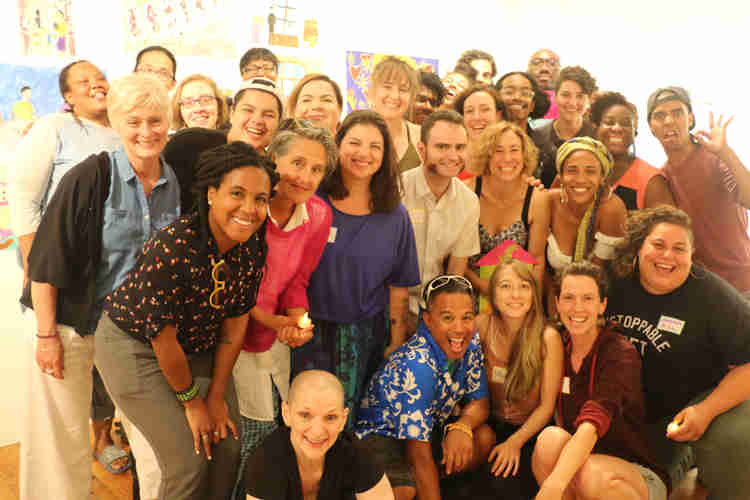
See more photos from the training and this fabulous group here.

